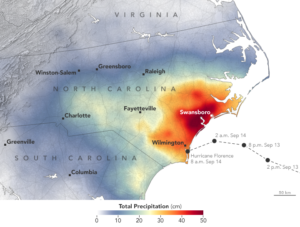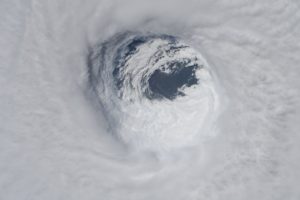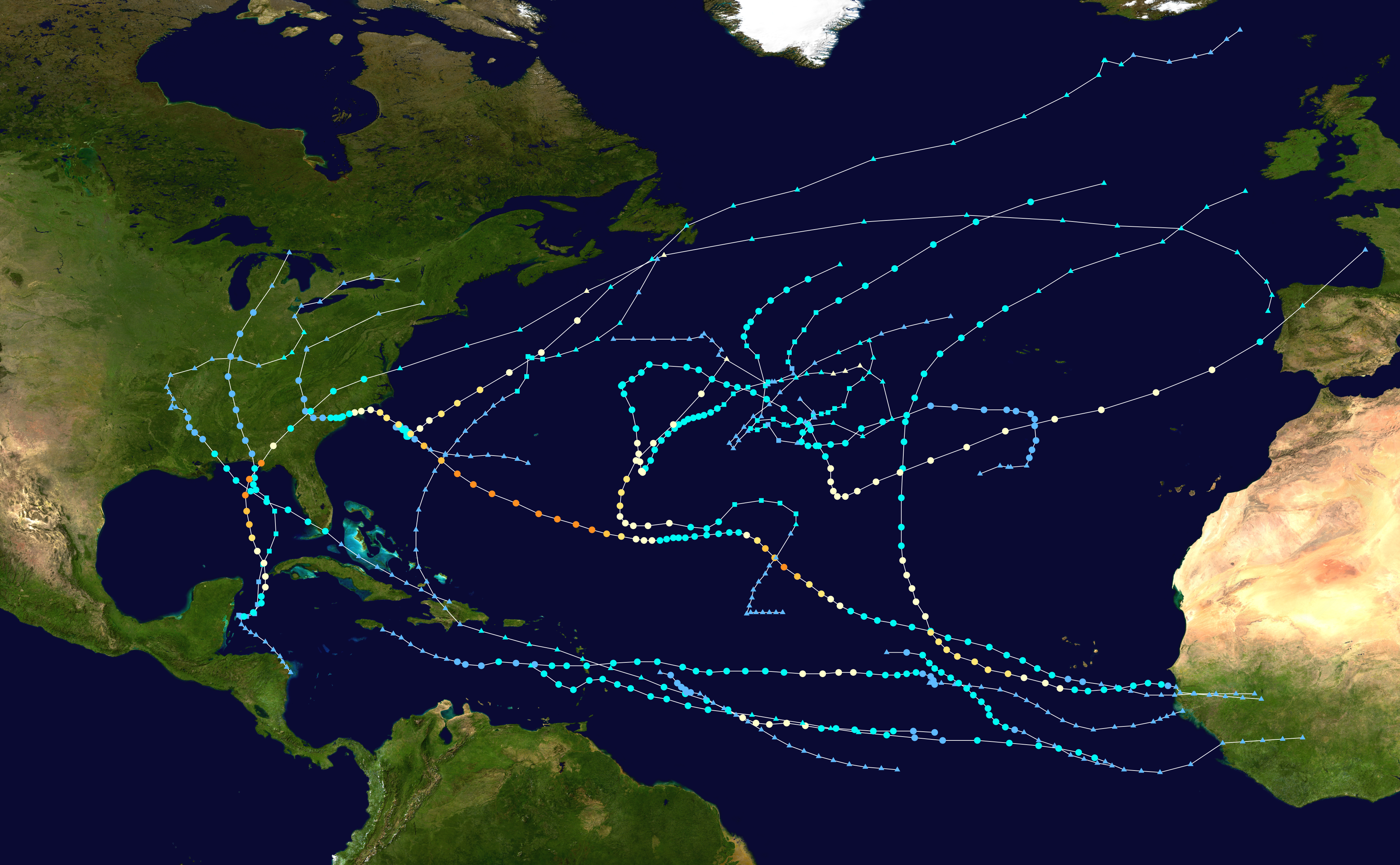2018 Hurricane Season Quick Stats
Each spring, several predictive services release their forecasts for the upcoming Hurricane Season, which officially runs June 1 – Nov 30. While named storms can form outside of this range, they are significantly weaker and rarely reach hurricane strength levels.
The National Hurricane Center initially predicted a below-average season for 2018 because the sea surface temperatures were cooler than normal across the tropical areas of the Atlantic Ocean. Also, an El Niño system was forecast; however, it failed to develop early enough to counter overall storm activity on a significant level. Due to these adjustments, a revised outlook for the 2018 Hurricane Season indicated 10-16 named storms with 5-9 reaching hurricane status and 1-4 becoming Major Hurricanes (Categories 3-5). The revised predictions turned out to be spot on for what resulted in 2018.
- Named storms: 15 (Alberto through Oscar)
- Hurricanes: 8 (Beryl, Chris, Florence, Helene, Isaac, Leslie, Michael, Oscar)
- Major Hurricanes: 2 (Florence – 31/Aug -17/Sept, Michael – 7-12/Oct)
- Strongest Storm: Cat 4 Michael – Oct 10 (Date of strongest conditions)
- Highest Maximum Sustained Winds: 155 mph (250 km/h)
- Lowest Minimum Central Pressure: 919 mb (27.1 inHg)
- Est Damages: $33.3 Billion (USD, 2018)
Hurricane Florence
The first major storm to make devastating landfall for the 2018 Atlantic Hurricane Season was Florence. The storm drove across the Atlantic Ocean, strengthening to a Category 4 hurricane in the middle of the ocean before dropping to a Tropical Storm. Then, as it continued westward, it once again coalesced and built up to a Category 4 as it made a line for North Carolina. Nearing the eastern United States, Hurricane Florence dropped to a Category 2 and made landfall as a strong Category 1 Hurricane. Florence came ashore south of Wilmington, NC, at Wrightsville Beach. It then dropped south, into South Carolina, as it weakened and quickly lost hurricane status. Upon landfall, Hurricane Florence managed sustained winds greater than 90 mph. The damages were widespread as Florence moved through the Carolinas:
- Heavy rainfall – record-setting, some areas reporting over 30 inches
- Storm surge – around 6 feet measured in New Bern, NC
- River flooding – frequently 5-10 feet above major flood stage levels, but the Cape Fear River (Fayetteville, NC) crested at 61.5ft, approximately 35 feet above flood stage!
- Strong winds – at times returning to over 100 mph
- Resultant tornadoes – ten in Virginia, one in North Carolina, two in South Carolina
- Deaths – 55 overall: 30 direct (e.g., wind, storm surge, wind-driven debris) and 25 indirect (e.g., heart attack, house fire, vehicle accidents)
Four months later, the rebuilding continues. Many beaches are still blocked off, and nearby businesses remain closed. In North Carolina, eight state-maintained roads are still closed and numerous town-maintained roads remain washed out. Many of the areas impacted rely on the annual tourism influx along the coast, to the beaches, in order to survive through the rest of the year.

Hurricane Florence’s landfall and cumulative precipitation (Source: NASA Earth Observatory)
Hurricane Michael
What would come to be known as the strongest storm of the season, Hurricane Michael made landfall near Mexico Beach, Florida, on the afternoon of October 10th. This coincided with the strongest moment in its path, with sustained winds at 155 mph (2 mph below the threshold for Category 5). Hurricane Michael ranks 3rd strongest by pressure (down to 919 mb) and 4th strongest by wind speed of storms making landfall in the continental United States. After the storm passed, little to nothing remained untouched to indicate the location of Mexico Beach. Nearly all buildings in town reportedly suffered severe damage. As the hurricane moved inland, it passed through Georgia still at Category 3 strength as it continued to rapidly weaken to a tropical storm. No major hurricane had entered Georgia since 1898!
Thursday, January 17th, marked one-hundred days after Michael’s devastating landfall. Roofs are still tarped, trees remain downed, and long-range financial issues continue to burden area homeowners, businesses, and farmers as much of their livelihoods were cleared down to mineral soil with Michael’s passing.

Hurricane Michael’s eye at the storm’s strongest conditions on October 10th, seen from the International Space Station (Source: Dr Serena M Auñón-Chancellor, NASA)
It will take more than simply a few months for these areas to rebound after Hurricanes Florence and Michael and other storms of the season wreaked havoc on a large portion of Southeast America, but people continue to rebuild and fight to regain their homes and reform their communities.





2 Comments